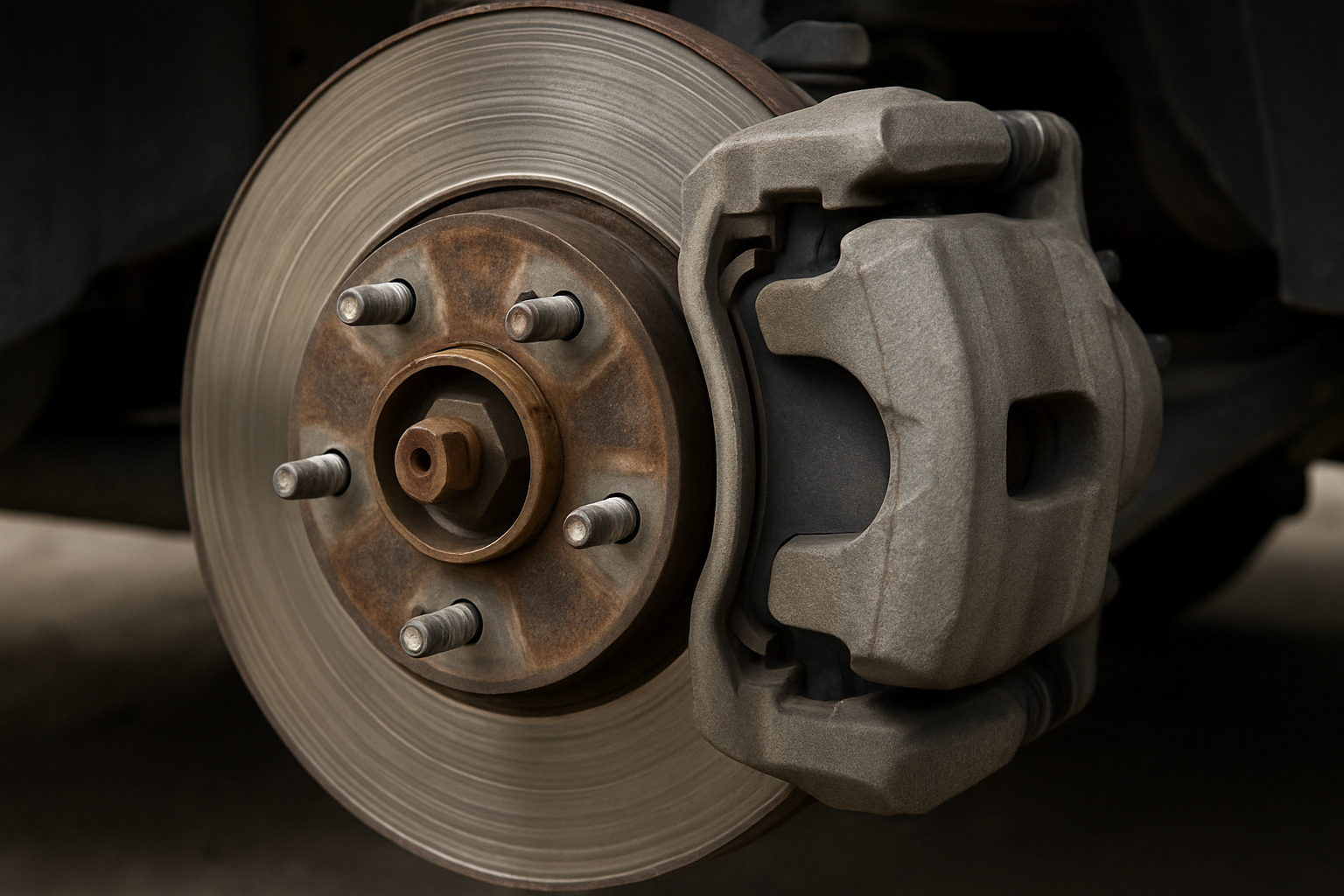Your car’s stopping power depends entirely on its brake system working flawlessly. Understanding the key brake system parts—from the friction‑generating pads to the spinning rotors and the hydraulic calipers—will help you appreciate how brakes work and why regular brake maintenance is essential. In this guide, we’ll break down each component’s role, explain the braking process step by step, and share maintenance tips to keep your brakes performing safely.
1. Core Brake System Parts
Brake Pads
Brake pads are the replaceable friction material that clamp down on the rotor to slow your vehicle. They consist of a metal backing plate bonded to a high‑friction composite surface. As the pads wear against the rotor, they gradually thin out and must be replaced—typically every 30,000 to 70,000 miles depending on driving style and pad compound.
Brake Rotors (Discs)
Rotors are the smooth, flat discs that spin with each wheel. When you press the brake pedal, the caliper squeezes the pads against both sides of the rotor, converting your car’s kinetic energy into heat. Rotors come in various designs—solid, vented, drilled, and slotted—to manage heat dissipation and resist warping under heavy use.
Brake Calipers
Calipers house the hydraulic pistons that push the pads into the rotor. In a typical floating‑caliper design, the caliper body slides on pins, allowing it to self‑center over the rotor. High‑performance cars may use fixed calipers with multiple pistons for more even pressure distribution and quicker response.
2. How Brakes Work: The Hydraulic Braking Process
The modern automotive brake system uses hydraulic fluid to transmit force from the pedal to the calipers. Here’s a step‑by‑step overview of how brakes work:
- Pushing the Pedal: When you depress the brake pedal, it pushes a piston in the master cylinder, forcing brake fluid out through the brake lines.
- Fluid Transfer: The incompressible brake fluid travels through metal and rubber lines to each wheel’s caliper.
- Caliper Activation: Inside the caliper, the fluid pressure pushes one or more pistons outward.
- Pad Engagement: The pistons press the brake pads against the spinning rotor’s surface.
- Friction & Heat: The pad‐to‐rotor friction slows wheel rotation, converting motion into heat, which dissipates into the air through the rotor design.
- Releasing the Pedal: Releasing the brake pedal reduces hydraulic pressure, retracting the pistons and letting the pads pull away from the rotor.
3. Brake Maintenance Best Practices
Regular brake maintenance keeps all components in good shape and prevents costly repairs or dangerous failures. Follow these guidelines:
- Inspect Pads & Rotors: Check pad thickness and rotor surface every 6,000 miles. Replace pads below manufacturer‑specified minimum thickness (usually around 3 mm) and resurface or replace rotors showing scoring or warping.
- Bleed the Brake Lines: Flush and replace brake fluid every 2 years or 24,000 miles. Moisture in old fluid can corrode calipers and reduce braking efficiency.
- Check Caliper Function: Ensure caliper pistons move freely. Sticking calipers can cause uneven pad wear and overheating.
- Listen for Warning Signs: Squealing or grinding noises often indicate worn pads or glazed rotors. Vibration in the pedal or steering wheel under braking can signal warped rotors.
- Use Quality Parts: Always choose OEM or high‑quality aftermarket pads and rotors that match your vehicle’s specifications for optimal performance and longevity.
4. When to Seek Professional Help
While many maintenance tasks are DIY‑friendly, seek a qualified mechanic if you notice any of the following:
- Brake pedal gradually sinking toward the floor.
- Fluid leaks near wheels or under the master cylinder.
- Extreme vibration or “pulsing” under braking.
- Unusual dashboard warning lights (e.g., ABS indicator).
Timely professional inspection ensures your safety and prevents small issues from becoming major repairs.
Conclusion
By understanding the roles of brake system parts—pads, rotors, and calipers—you’ll know exactly how brakes work and when to perform crucial brake maintenance. Regular inspections, fluid changes, and timely part replacements not only extend the life of your braking system but also keep you safe on the road. Make brake care a priority, and you’ll enjoy peace of mind every time you press the pedal.
